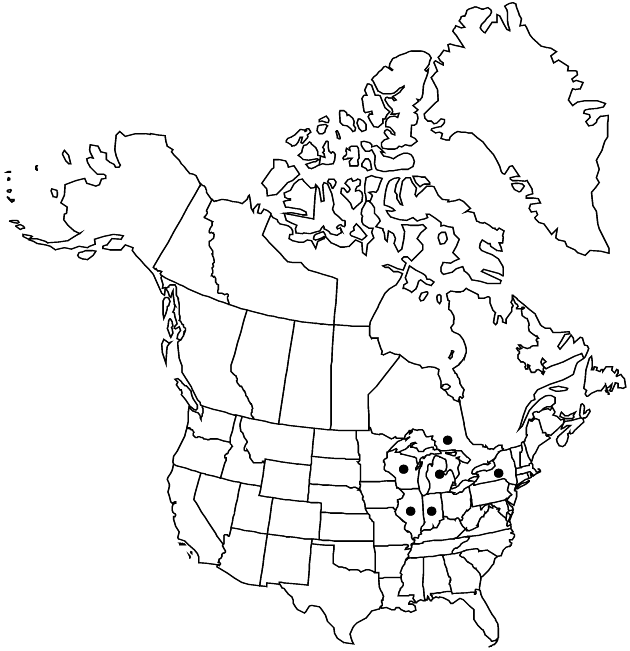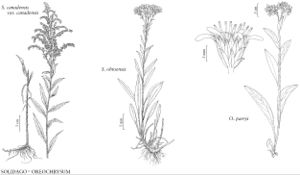Difference between revisions of "Solidago ohioensis"
W. J. Med. Phys. Sci. 8: 499. 1835.
imported>Volume Importer |
imported>Volume Importer |
||
| Line 62: | Line 62: | ||
|publication year=1835 | |publication year=1835 | ||
|special status=Illustrated;Endemic | |special status=Illustrated;Endemic | ||
| − | |source xml=https:// | + | |source xml=https://bitbucket.org/aafc-mbb/fna-data-curation/src/2e0870ddd59836b60bcf96646a41e87ea5a5943a/coarse_grained_fna_xml/V19-20-21/V20_360.xml |
|tribe=Asteraceae tribe Astereae | |tribe=Asteraceae tribe Astereae | ||
|genus=Solidago | |genus=Solidago | ||
Latest revision as of 20:02, 5 November 2020
Plants 40–100 cm; caudices densely rooting, branching; vascular bundles and petiole bases marcescent (attached to old stems for more than a season). Stems 1–10+, erect, slender to stout (tall shoots), glabrous. Leaves: basal often persistent, also present as new rosettes at flowering, tapering to winged petioles to 250 mm, blades narrowly ovate to lanceolate, 50–150 × 15–45 mm, apices obtuse to acute, faces glabrous; proximal cauline similar, reduced distally (petioles becoming less developed); distal sessile, blades prominently 1-nerved, ovate to lanceolate, 75–100 × 8–12 mm, much reduced distally, margins entire, flat, apices acute. Heads 10–500+ in corymbiform arrays, branches glabrous. Peduncles 6.3–8.5 mm, glabrous; bracteoles 3, linear to lanceolate, sometimes grading into phyllaries. Involucres campanulate, 4–5 mm. Phyllaries (14–18) in 3–4 series, broadly linear to ovate, unequal, obtuse, obscurely striate. Ray florets 6–8; laminae 4.6–5 × 0.5–0.7 mm. Disc florets 8–20; corollas 4–4.5 mm, lobes 0.6–1 mm. Cypselae (obconic) 1.6–2.2 mm, glabrous; pappi 2.5–3 mm (apically clavate). 2n = 18.
Phenology: Flowering Sep–Oct.
Habitat: Marshes, wet sand dunes, along rivers
Elevation: 100–300 m
Distribution

Ont., Ill., Ind., Mich., N.Y., Wis.
Discussion
Solidago ohioensis is most likely to be confused with S. riddellii, which has folded and multinerved leaves, and S. houghtonii, which has arrays with few large heads. Solidago ohioensis is found in the southwestern Great Lakes area and the flatlands region to the southwest. Hybrids between S. ohioensis and S. ptarmicoides occasionally occur where the two parents are sympatric. Those hybrids were described as S. ×krotkovii B. Boivin [Oligoneuron ×krotkovii (B. Boivin) G. L. Nesom] and can be similar to S. houghtonii.
Selected References
None.
